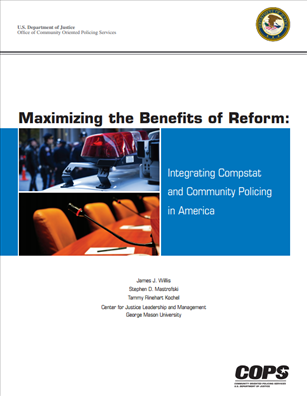Maximizing the Benefits of Reform: Integrating Compstat and Community Policing in America
During the last quarter century or so, Compstat and community policing have emerged as powerful engines of police reform in the United States. Compstat is a strategic management system focused on reducing serious crime by decentralizing decision-making to middle managers operating out of precincts or districts, by holding these managers accountable for performance, and by increasing the organization's capacity to identify, understand, and monitor responses to crime problems. Community policing can be characterized as a philosophy and an organizational strategy designed to reduce crime and disorder through community partnerships, problem solving, and the delegation of greater decisionmaking authority to patrol officers and their sergeants at the beat level. It varies more than Compstat from place to place in response to local problems and community resources. To date, researchers have focused their energy on identifying the individual merits and weaknesses of each, but have given much less attention to how well these reforms operate when implemented in the same police organization. The Office of Community Oriented Policing Services (the COPS Office) asked us to conduct research and write a report on this co-implementation issue: Do Compstat and community policing work together, mutually supporting each other, or are there points of conflict, where pursuing one makes it harder to pursue the other successfully? Moreover, do they work separately, that is each having little consequence for the other?
Author: James J. Willis, Stephen D. Mastrofski, Tammy Rinehart Kochel
Federal Sponsor Agency: COPS
Provider: George Mason University
Publication Date: 2010
